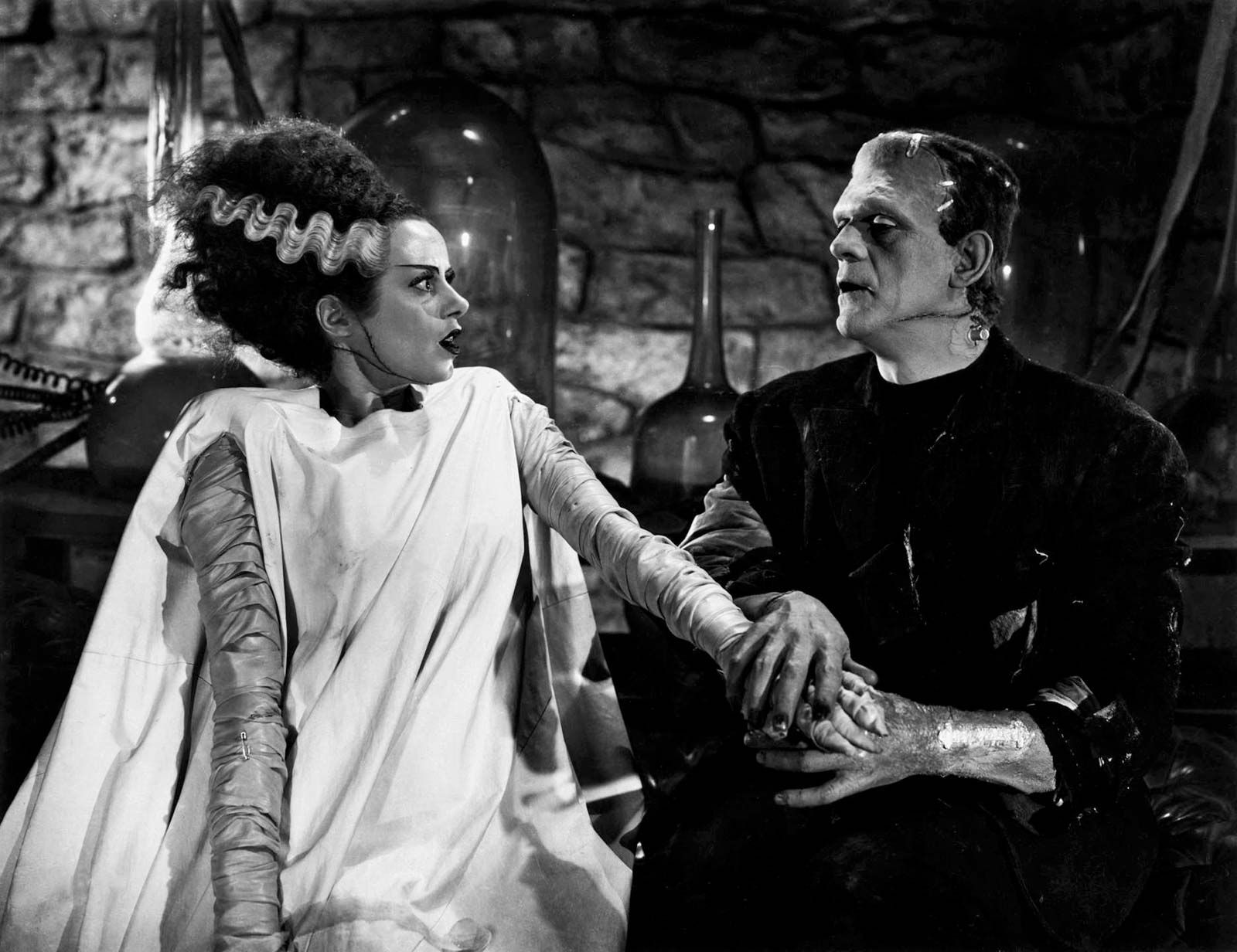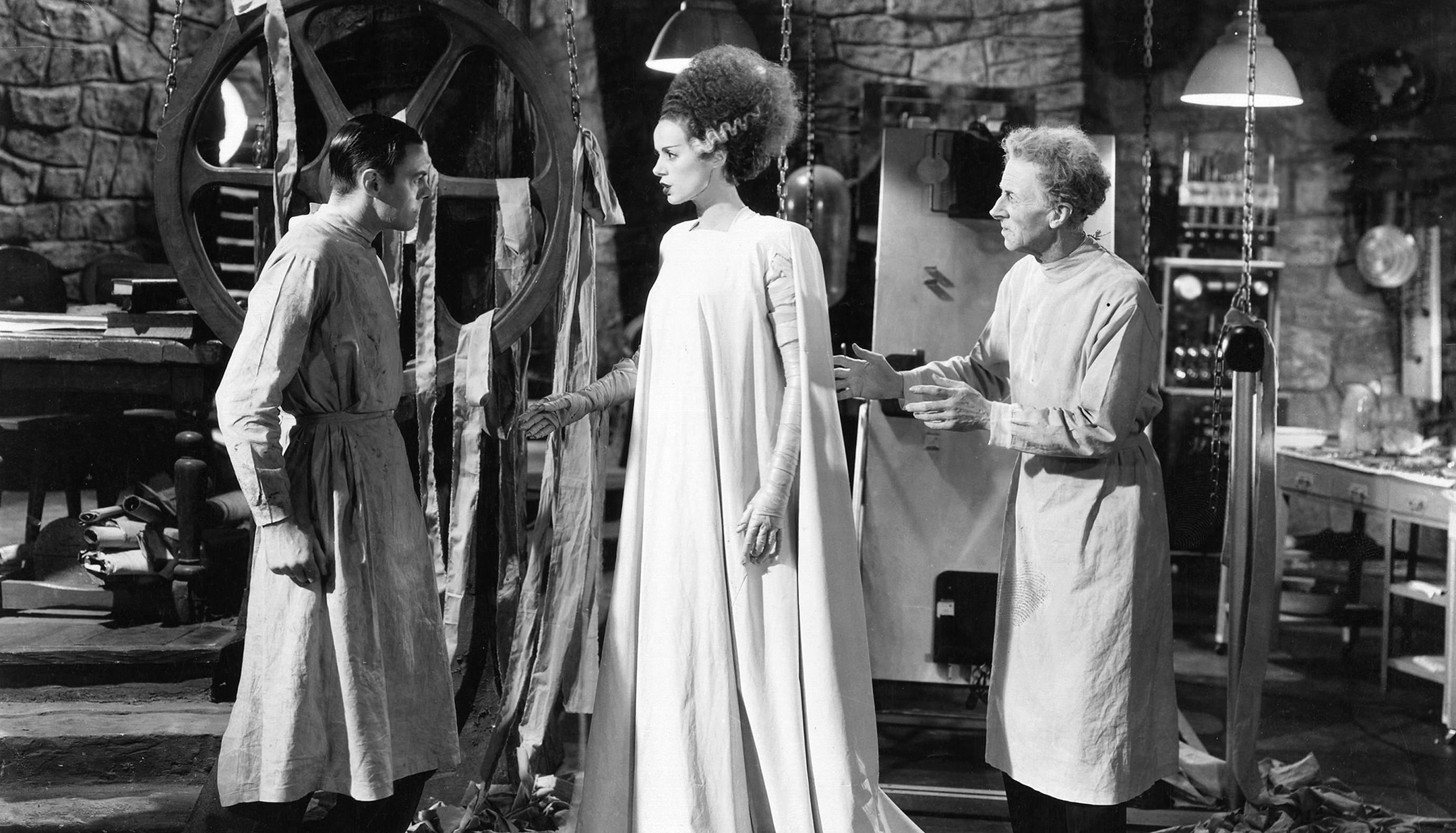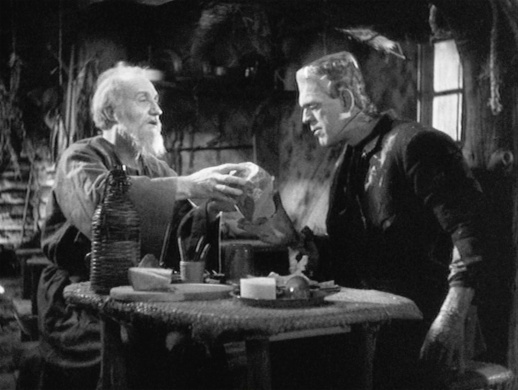Movie Review – Bride Of Frankenstein (Mini Review)
Principal Cast : Boris Karloff, Colin Clive, Valerie Hobson, Ernest Thesiger, Elsa Lanchester, Gavin Gordon, Douglas Walton, Una O’Connor, EE Clive, Lucian Prival, OP Heggie, Dwight Frye, Ted Billings, Reginald Barlow, Mary Gordon.
Synopsis: Mary Shelley reveals the main characters of her novel survived: Dr. Frankenstein, goaded by an even madder scientist, builds his monster a mate.
********
Terrific sequel to James Whale’s classic Frankenstein, this evocative and stylish horror film from Universal’s early genre film catalogue has been argued as one of the greatest successor films ever made. That may be a bone of contention for me, but I will say that Bride of Frankenstein is a terrific piece of entertainment and a wonderful example of great horror storytelling done right. The film saw Boris Karloff (credited only as Karloff, well before single-name nomenclature became popular later in the Century) re-team with Colin Clive and director James Whale to once again bring to life Mary Shelley’s popular horror creation to the big screen, with indelible imagery and now-iconic franchise embellishments. The film picks up immediately after the events of the first film, with Karloff’s undead Monster supposedly perishing in a conflagration while the pitchfork-wielding villagers ruminate on the destruction. Characteristically, the Monster isn’t dead (not properly, at least), and clambers from the ruins to again terrorise the land with his groaning and stumbling. Meanwhile, Henry Frankenstein meets up with his former mentor, the ominously named Dr Septimus Pretorius (good god what a name), played by a terrifying Ernest Thesiger in full stage makeup, and together they concoct a hugely implausible plan to reanimate another corpse, this time in the form of a female mate for the original Monster. This “bride” arrives in the form of Elsa Lanchester, who also plays a dual role as the enigmatic author Mary Wollstonecroft Shelley in the film’s opening prologue.

Bride of Frankenstein wants little for style and substance. Briskly paced – seriously, if you look away for even a moment you’ll likely miss two or three crucial plot points – and directed with prodigious flourish by Whale and his cinematographer John J Mescall (Show Boat) there are some absolute jaw-dropping moments to savour for people who appreciate textured and layered visuals. The film feels sumptuous, from the vaulted ceilings of Frankenstein’s castle and his stone-tower laboratory, to the sprawling village and surrounding lands, to the tiniest hermit hut on the edge of the forest (shout-out to South Australian-born actor OP Heggie, as the blind hermit!), it looks as if no expense was spared producing the film. The dialogue is obviously very cheesy and exposition-heavy, with a lot of descriptive and explanatory language used by all the characters within. Karloff again portrays the Monster as a tragic figure of hubris and fear, while Lanchester’s eventual assumption of the role of the Bride has typified the zeitgeist from that day to this with its immediate iconic look. The human characters range from comedic to scary, and a mix of everything in between, and while I don’t think this film captured the previous movie’s melancholy sorrow amidst the horror, it does absolutely slay when it comes to the various horrific deaths Whale and is team throw at us. And at a little over an hour in length, it’s incredibly fast-paced.

Bride Of Frankenstein is, for all intents, the perfect sequel. It picks up immediately after the original film, moves the narrative along quickly, gives established characters an evolving arc to follow, and satisfies the cravings of a thrill-seeking crowd. It even rides hard on the coattails of the first film’s success, once again giving us a half-screamed “It’s aliiive” moment. It’s hard to overstate just how amazing the film looks, as well, as opulent and lavish as any of its big-budget brethren. Bride of Frankenstein is definitely an absolute classic and arguably one of the best horror sequels early Universal ever put out.


